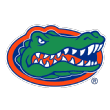Two Texas Football Stars Make College Football’s Top 10 Quarterbacks of the 2000s
 10. Colt McCoy from Texas
10. Colt McCoy from Texas
Period: 2006-09 Performance: Accumulated 13,253 passing yards, completed passes at a rate of 70%, threw 112 touchdowns, 45 interceptions, rushed for 1,571 yards, and scored 20 rushing touchdowns.
In 2008, McCoy held the record for the highest completion rate in FBS history at 76.7%, which remained unbroken for 12 years until Mac Jones narrowly surpassed it last year. He achieved top-three finishes in the Heisman voting twice (2008, 2009) and was on track for a remarkable legacy until he exited the 2009 BCS Championship due to injury during Texas’ first drive. With 45 victories in his career, McCoy’s legacy is marked by the question of what could have been.
9. Marcus Mariota of Oregon,
from 2012 to 2014. Mariota accumulated 10,796 passing yards, completed 67% of his passes, threw 105 touchdowns and 14 interceptions, rushed for 2,237 yards, and scored 29 rushing touchdowns during this period.
In 2014, Oregon’s defense experienced a significant decline, conceding 27 or more points in seven games. However, this didn’t have much impact because the Ducks had Mariota leading their offense. Despite winning the Heisman Trophy and being drafted second overall in the NFL draft the following year, Mariota’s exceptional performance in 2014 stood out with his combined 5,224 passing and rushing yards and 57 total touchdowns in an era of remarkable statistics.
 8. is Lamar Jackson from Louisville,
8. is Lamar Jackson from Louisville,
During the years 2015 to 2017. Jackson recorded 9,043 passing yards, completed 57% of his passes, threw 69 touchdowns and 27 interceptions, rushed for 4,132 yards, and scored 50 rushing touchdowns during this timeframe.
At the beginning of the century, Woody Dantzler of Clemson achieved the first 2,000/1,000 season. Fast forward less than two decades, Jackson accomplished consecutive seasons with 3,500 passing yards and 1,500 rushing yards. Known for his impressive passing skills and exceptional running ability, Jackson was considered the most intimidating rushing quarterback since Michael Vick. And let’s not forget that memorable hurdle move by Jackson, which left a lasting impression.
 7. spot is Kyler Murray Texas A&M and Oklahom
7. spot is Kyler Murray Texas A&M and Oklahom
who played for both Texas A&M and Oklahoma from 2015 to 2018. He recorded 5,406 passing yards, completed 67% of his passes, threw 50 touchdowns and 14 interceptions, rushed for 1,478 yards, and scored 13 rushing touchdowns during his college career.
Initially drafted in the first round for baseball, Murray ultimately chose to play one final season of college football in 2018, and it proved to be a fantastic decision. Taking over the reins from Baker Mayfield at Oklahoma, Murray amassed 4,361 passing yards, added 1,478 rushing yards, and totaled 54 combined touchdowns in a single remarkable season. Following this exceptional performance, he went on to be selected in the first round of another draft.
 6. is Deshaun Watson, who played for Clemson
6. is Deshaun Watson, who played for Clemson
From 2014 to 2016. During his time at Clemson, he accumulated 10,168 passing yards, completed 67% of his passes, threw 90 touchdowns, 32 interceptions, rushed for 1,934 yards, and scored 26 rushing touchdowns.
Before Deshaun Watson’s arrival, “Clemsoning” was synonymous with failing on the grandest stages. However, Watson’s impact transformed Dabo Swinney’s program, elevating it from being good to exceptional. Watson showcased his skills by averaging 4,351 passing yards and 867 rushing yards during the 2015-16 seasons. He led Clemson to the College Football Playoff title game and secured victory the following year. Thanks to Watson, “Clemsoning” underwent a complete transformation, now signifying achieving significant victories on the big stage.
 5. on the list is Joe Burrow, who played for both Ohio State and LSU from 2016 to 2019. Throughout his college career, Burrow accumulated 8,852 passing yards, completed 69% of his passes, threw 78 touchdowns, 11 interceptions, and scored 13 rushing touchdowns.
5. on the list is Joe Burrow, who played for both Ohio State and LSU from 2016 to 2019. Throughout his college career, Burrow accumulated 8,852 passing yards, completed 69% of his passes, threw 78 touchdowns, 11 interceptions, and scored 13 rushing touchdowns.
Following a solid initial season as LSU’s starting quarterback, Burrow delivered an exceptional passing performance that is unmatched in college football history. He set records by throwing for 5,671 yards and 60 touchdowns in a single season. Notably, he almost scored as many rushing touchdowns (five) as he threw interceptions (six). Burrow led LSU, a team that had not secured a top-five finish in eight years, to an undefeated 15-0 season and a national championship victory.
Burrow’s outstanding 2019 performance is often compared to Cam Newton’s remarkable 2010 season, showcasing the caliber of his accomplishments. Being likened to Newton’s achievement is considered the highest form of praise in college football circles.
 4. is Tim Tebow, who played for Florida from 2006 to 2009. Over his college tenure, Tebow amassed 9,285 passing yards, completed 66% of his passes, threw 88 touchdowns, 16 interceptions, rushed for 2,947 yards, and scored 57 rushing touchdowns.
4. is Tim Tebow, who played for Florida from 2006 to 2009. Over his college tenure, Tebow amassed 9,285 passing yards, completed 66% of his passes, threw 88 touchdowns, 16 interceptions, rushed for 2,947 yards, and scored 57 rushing touchdowns.
In 2006, Tebow played a crucial role as a short-yardage back and a formidable passing option in the red zone, contributing to Florida’s national championship victory.
The following year, in 2007, Tebow recorded a combined total of 4,181 rushing and passing yards and earned the prestigious Heisman Trophy.
In 2008, his memorable speech and leadership guided the Gators to a 13-1 record and their second national championship during his time with the team.
During his final year in 2009, Tebow led the Gators to another impressive 13-1 record, accumulated 3,805 combined rushing and passing yards, and achieved a top-five finish in the Heisman voting for the third consecutive year.
It is nearly impossible to envision a more comprehensive and remarkable college football career than the one Tim Tebow had.
 3. is Vince Young, who played for Texas
3. is Vince Young, who played for Texas
From 2003 to 2005. Throughout his college career, Young accumulated 6,040 passing yards, completed 62% of his passes, threw 44 touchdowns, 28 interceptions, rushed for 3,127 yards, and scored 37 rushing touchdowns.
A notable aspect of Young’s career was its remarkable turnaround. Initially, his performance was underwhelming; while he showcased exceptional running abilities, his passing skills lagged behind, leading to a brief benching midway through the 2004 season.
However, Young experienced a significant transformation. In 2004, the University of Texas (UT) averaged 38 points per game, culminating in a Rose Bowl victory. The following season in 2005, the team excelled, achieving a flawless 13-0 record. Young demonstrated his prowess by throwing for 3,036 yards and rushing for 1,050 yards. His final eight rushing yards secured a thrilling last-second victory over Matt Leinart and USC in what is widely regarded as the greatest national championship game ever played.
 2. is Cam Newton, who represented Auburn from 2007 to 2010, predominantly shining in the 2010 season. Throughout his college tenure, Newton accumulated 2,908 passing yards, completed 65% of his passes, threw 30 touchdowns, 7 interceptions, rushed for 1,586 yards, and scored 24 rushing touchdowns.
2. is Cam Newton, who represented Auburn from 2007 to 2010, predominantly shining in the 2010 season. Throughout his college tenure, Newton accumulated 2,908 passing yards, completed 65% of his passes, threw 30 touchdowns, 7 interceptions, rushed for 1,586 yards, and scored 24 rushing touchdowns.
Cam Newton emerged as a standout phenomenon in a single season like no other in the sport’s history. Following two years as a backup to Tim Tebow at the University of Florida, Newton triumphed in winning a junior college national championship at Blinn College. Subsequently, he transferred to Auburn, where he played a pivotal role in propelling the Tigers to their first AP national championship since 1957. While his supporting cast was competent, it did not match the caliber of players surrounding Vince Young or Tim Tebow. Nevertheless, Newton managed to excel as both the premier running back and quarterback in the sport simultaneously.
Following his college success, Newton swiftly transitioned to an NFL career marked by accolades such as an MVP award, over 31,000 passing yards, and an appearance in the Super Bowl.
 1. is Baker Mayfield, hailing from Oklahoma and playing from 2013 to 2017. Over his college years, Mayfield amassed 14,607 passing yards, completed 69% of his passes, threw 131 touchdowns, 30 interceptions, rushed for 1,083 yards, and scored 21 rushing touchdowns.
1. is Baker Mayfield, hailing from Oklahoma and playing from 2013 to 2017. Over his college years, Mayfield amassed 14,607 passing yards, completed 69% of his passes, threw 131 touchdowns, 30 interceptions, rushed for 1,083 yards, and scored 21 rushing touchdowns.
While Newton, Young, and Burrow dazzled with remarkable single seasons, Mayfield crafted the most impressive career. His journey commenced as a walk-on at Texas Tech, where he swiftly claimed the starting quarterback position and showcased his talent by throwing for 413 yards in his debut game. Despite facing setbacks like losing his starting role due to injury, Mayfield persevered and later transferred to Oklahoma, revitalizing their success. Prior to his arrival, the Sooners had not secured a conference title outright since 2010. However, under his leadership, they clinched three consecutive titles, achieved three top-five finishes, and earned two College Football Playoff berths.
Mayfield culminated his fairy-tale college career by amassing 4,938 yards both passing and rushing, scoring 48 touchdowns, winning the prestigious Heisman Trophy, and steering OU to the brink of a national championship appearance. His exceptional performance on the field, despite not fitting the traditional quarterback size mold, compelled the Cleveland Browns to select him as the top overall pick in the 2018 NFL Draft.



